DJI NEO 2 Hands-On: Chinese Reviewer Shows Omnidirectional Obstacle Avoidance and Dual-Axis Gimbal in Action
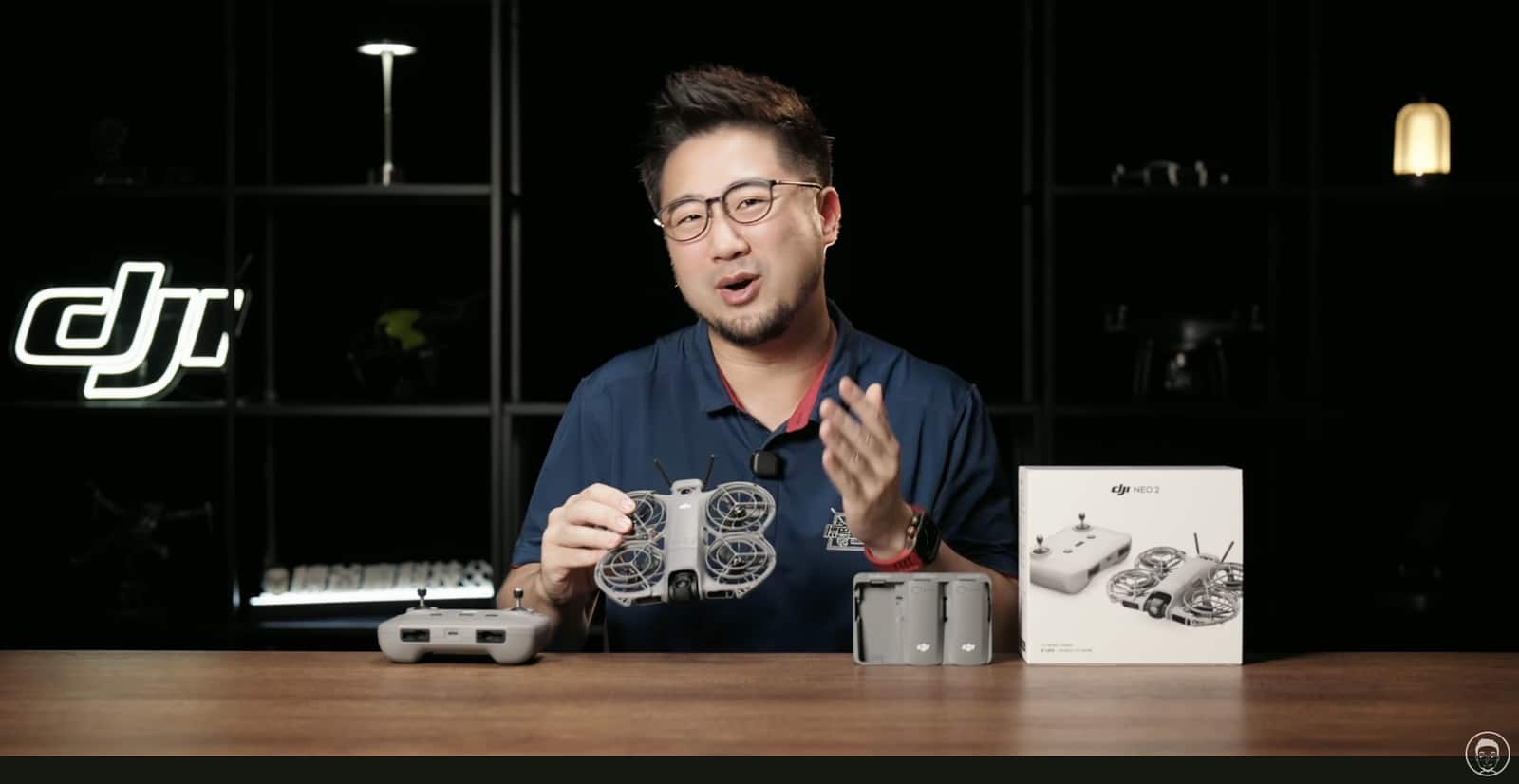
Amazon Drone Deals: DJI Mini 5 Pro Fly More Combo with DJI RC2 now for $1,099!
Chinese drone specialist Huaiba from “怀爸疯科技” (Huaiba Crazy Tech) has published an extensive hands-on review of the DJI NEO 2, providing the first detailed look at how the upgraded palm-launched drone performs in real-world conditions. His YouTube video demonstrates the NEO 2’s new dual-axis gimbal, omnidirectional obstacle avoidance system, and dramatically improved tracking capabilities through extensive outdoor testing.
The video opens with footage entirely captured using the NEO 2, showcasing the improved image quality before Huaiba delivers his assessment: “NEO 2 really squeezed the toothpaste tube until it burst—there’s no holding back at all.”
Completely Redesigned Body with User-Friendly Controls
Huaiba begins by examining the NEO 2’s exterior changes. The drone features an entirely new design with a slightly larger body compared to the original. DJI changed the color to match the DJI Mini 5 Pro’s deep gray finish. The weight increased by approximately 20 grams—the bare aircraft weighs 151 grams, while adding the O4 transmission module brings it to 160 grams, still under Taiwan’s 249-gram registration-free limit.


The belly and sides now include physical buttons. “Now you don’t need to open the DJI Fly App or wait for your phone to connect,” Huaiba explains. “You can directly use the buttons—long press to switch and modify shooting parameters.”
A small screen on the front displays current shooting settings. Most importantly, DJI moved the LED indicator lights from the bottom to the front near the camera.
“You can clearly see the current shooting status at a glance,” Huaiba notes. “You don’t have to guess like the previous generation whether the NEO has finished shooting or not.”
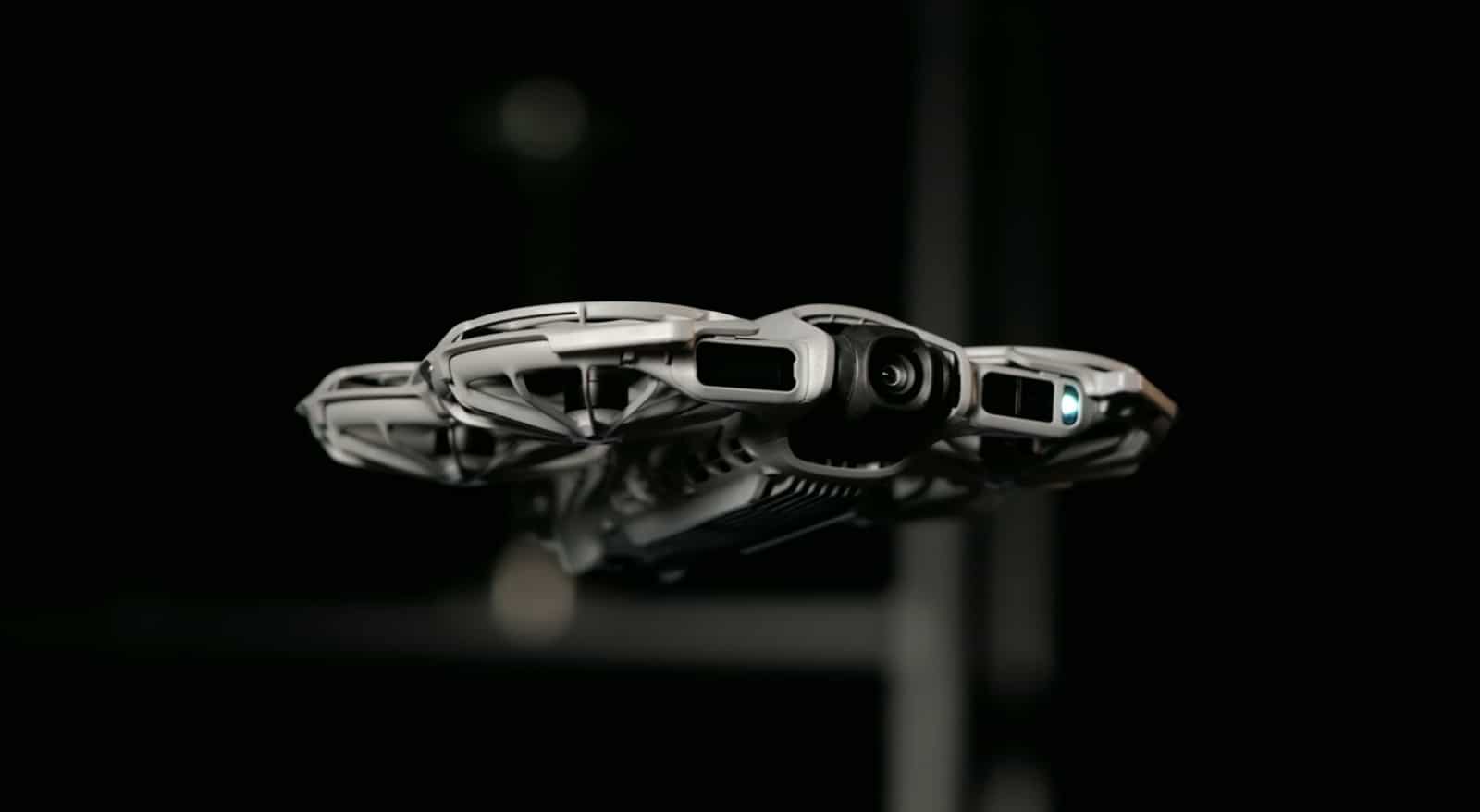
Next to the LED lights sits what Huaiba calls a breakthrough feature: laser-based obstacle avoidance that enables continued operation at night and ensures safe return to home in low light.

“Black Technology”: Dual Fisheye Cameras Deliver Full Obstacle Avoidance
Huaiba reserves his highest praise for what he considers the most impressive upgrade. DJI added fisheye cameras to the top and bottom of the NEO 2 body. “Using binocular vision cameras, it can achieve omnidirectional obstacle avoidance,” he explains. This enables safe operation of advanced tracking modes like reverse follow and orbit shots.
“What impresses me most is that DJI can use dual vision positioning systems,” Huaiba says, emphasizing that the system works reliably when flying over water, snow, and other areas where ground textures are unclear—situations where the original NEO’s stability suffered dramatically.

DJI didn’t stop at just enabling the aircraft to see its surroundings. The company implemented the complete tracking system from the Mini 4 Pro and higher models, including person and vehicle frame selection with eight-direction compass custom following. “Let the NEO 2 have the same following ability as high-end models,” Huaiba notes.
He demonstrates by deliberately weaving between tree trunks during directional follow mode. The footage shows the NEO 2 successfully avoiding all obstacles, switching to rear following only when spaces became too tight, then automatically returning to side following once clearance improved.
Huaiba acknowledges that after extensive testing, the six-fisheye-camera systems on the Mini 5 Pro and Air 3S still provide superior obstacle avoidance compared to the DJI NEO 2. “But considering the NEO 2’s size, weight, and price, its obstacle avoidance effect is already very usable. This really is black technology without a doubt.”

Significantly Improved Flight Dynamics and Tracking Speed
The NEO 2 features redesigned propellers that make flight “more quiet and less shrill,” according to Huaiba. Ascent speed increased 65% from 3 m/s to 5 m/s. Maximum altitude remains limited at 120 meters. Wind resistance improved from level 4 to level 5.
Most significantly for action tracking, following speed increased dramatically by 50%—from approximately 28 km/h to 43 km/h. “It can completely meet the needs of following cycling,” Huaiba confirms. Flight time remains approximately 18 minutes.
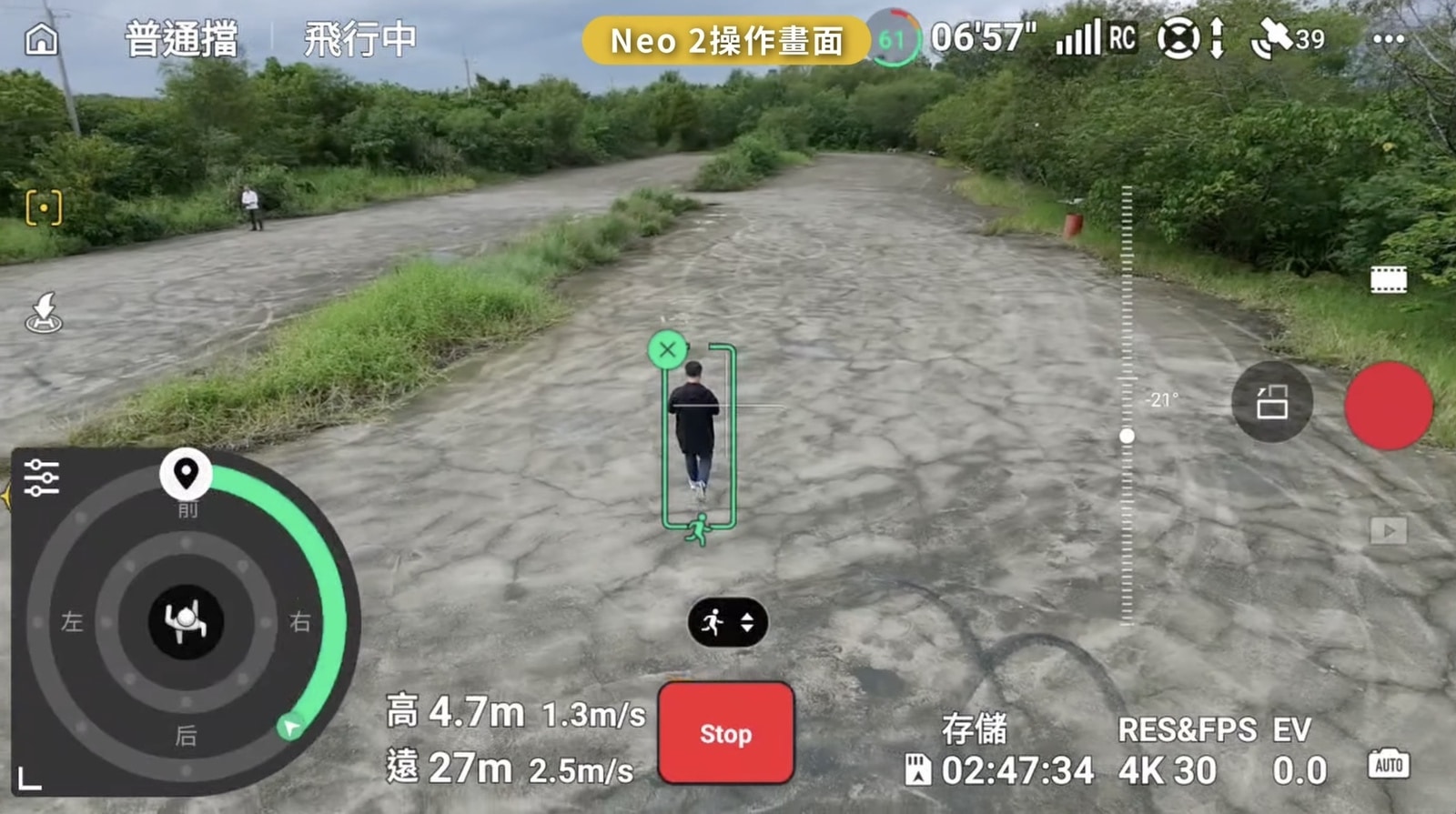
Dramatically Improved Image Quality and Video Capabilities
Huaiba details the camera improvements: aperture widened from f/2.8 to f/2.2. While the sensor size remains 1/2-inch, DJI implemented a new image sensor and processor. “Therefore, whether in low-light environments or video recording specifications, there have been obvious improvements,” he says.
Standard recording reached what Huaiba calls “an exaggerated 4K 60fps,” allowing smoother footage and convenient half-speed slow-motion in post-production. DJI added 4K 100fps slow-motion mode to “record these frozen moments in time.”
Vertical video recording improved from 1080p to 2.7K—a significant upgrade for short-form content creators. Photo resolution remains at 12 megapixels without RAW support, which Huaiba notes is “a bit of a pity.”
Dual-Axis Gimbal Eliminates Digital Stabilization Cropping
The gimbal received a complete redesign. DJI added a roll axis, upgrading from single-axis to dual-axis mechanical stabilization. The pitch axis range increased from 60 degrees upward to 70 degrees.
“After adding the roll axis, the image stability during flight has greatly improved,” Huaiba explains. “It also significantly reduced digital stabilization cropping.”
Compared to the original DJI NEO, the field of view expanded considerably. Footage during windy conditions or downward shooting shows much less shake and unsettling movement. “You’re much less likely to see gimbal axis angle reaching limit warning messages,” he adds.
Huaiba presents direct comparison footage of the original NEO, the Flip, and the NEO 2 flying in identical outdoor conditions, allowing viewers to judge the image quality improvements themselves.


Enhanced Color Science and Computational Photography
After reviewing the comparison footage, Huaiba notes that while the NEO 2 lacks 10-bit D-Log M and RAW capability, it inherits the Mini 5 Pro’s color science. “The straight-out-of-camera footage without color grading performs better and is more pleasing.”
Even in challenging evening light conditions, the NEO 2 produces good colors. “It allows you to slightly overlook the defects produced in low-light details,” Huaiba observes.
The NEO 2 can identify people in the frame and uses algorithms to optimize skin tone and lighting. Huaiba demonstrates the intelligent selfie feature extensively, praising it as his favorite function.
“It’s like your personal photographer helping you automatically change angles to take photos. Every shot looks good. The NEO 2 can truly become the new generation of Vlog god machine.”
Doubled Storage and 4x Faster Transfer Speeds
Internal storage doubled from 22GB to 49GB. Transfer speed to smartphones increased four-fold to 80MB/s, “allowing large amounts of video to be quickly transferred to your phone.”
Revolutionary Hand Gesture Control System
Huaiba demonstrates what he considers one of the most enjoyable new features: hand gesture control. Previously, adjusting following angle and distance required pre-flight app configuration. Now users simply raise their palm and spread their fingers to begin controlling the following direction.
“Opening both hands can control and adjust different shooting distances,” he shows, with the drone responding to hands spreading apart (increase distance) or coming together (decrease distance). “Very sensitive and fun.”
Subject switching works seamlessly—another person simply raises their hand while in frame, and “the following subject will change to him.”
New Riding Follow Mode with Eight-Direction Control
The NEO 2 added dedicated riding follow mode and skiing follow mode. Huaiba demonstrates cycling follow with precise control over eight following angles. “The tracking effect for filming bicycles is really very powerful.”
Built-in shooting modes now include Master Shots and the sliding zoom feature first introduced on the Flip.
Ending a flight requires only extending your palm forward—the drone stops recording and returns to land in your hand. “Unlike other models that can only stand still and wait 3 seconds, or connect through the phone app and click return before it will fly back to your hand.”
Outdoor Demonstrations Across Multiple Scenarios
Huaiba conducts extensive outdoor testing, beginning with a forest trail. “Most of the time I bought it is hoping I can take off directly without any remote controller,” he explains. The side buttons allow quick parameter changes—cycling through modes like Master Shots, adjusting distance settings (10 or 20 meters), then pressing the red record button for countdown takeoff.
“You can see from the screen that its LED light has already lit up,” Huaiba notes. “The front-facing LED light helps me quickly know whether it’s shooting or not.” When the light turns white, recording is active. After completing multiple automatic movements in Master Shots mode, “the light status changes back to off, and I know it has finished shooting.”

He demonstrates sliding zoom mode, then shows the follow mode’s hand gesture control in detail, repositioning the drone from rear to side to front following positions by moving his raised palm. “So in this mode you can very simply adjust its following angle without using your phone.”
The distance adjustment demonstration shows spreading both hands to increase following distance, bringing them together to decrease it, all with immediate visual feedback from the drone’s flashing blue indicator.
Smartphone App Integration and Audio Recording
For users wanting real-time audio recording, Huaiba shows connecting the DJI Fly app. “After opening and pairing, it will use the microphone on your phone for audio recording.” The NEO 2 retains voice command functionality—Huaiba uses voice control to launch the drone without touching any buttons.
The intelligent selfie mode demonstration shows the system automatically adjusting to four pre-selected angles (distant view, full body, close-up overhead), with three-second countdowns visible on the front display. “This function is really very fun because it automatically helps you adjust different angles, like your personal photographer.”
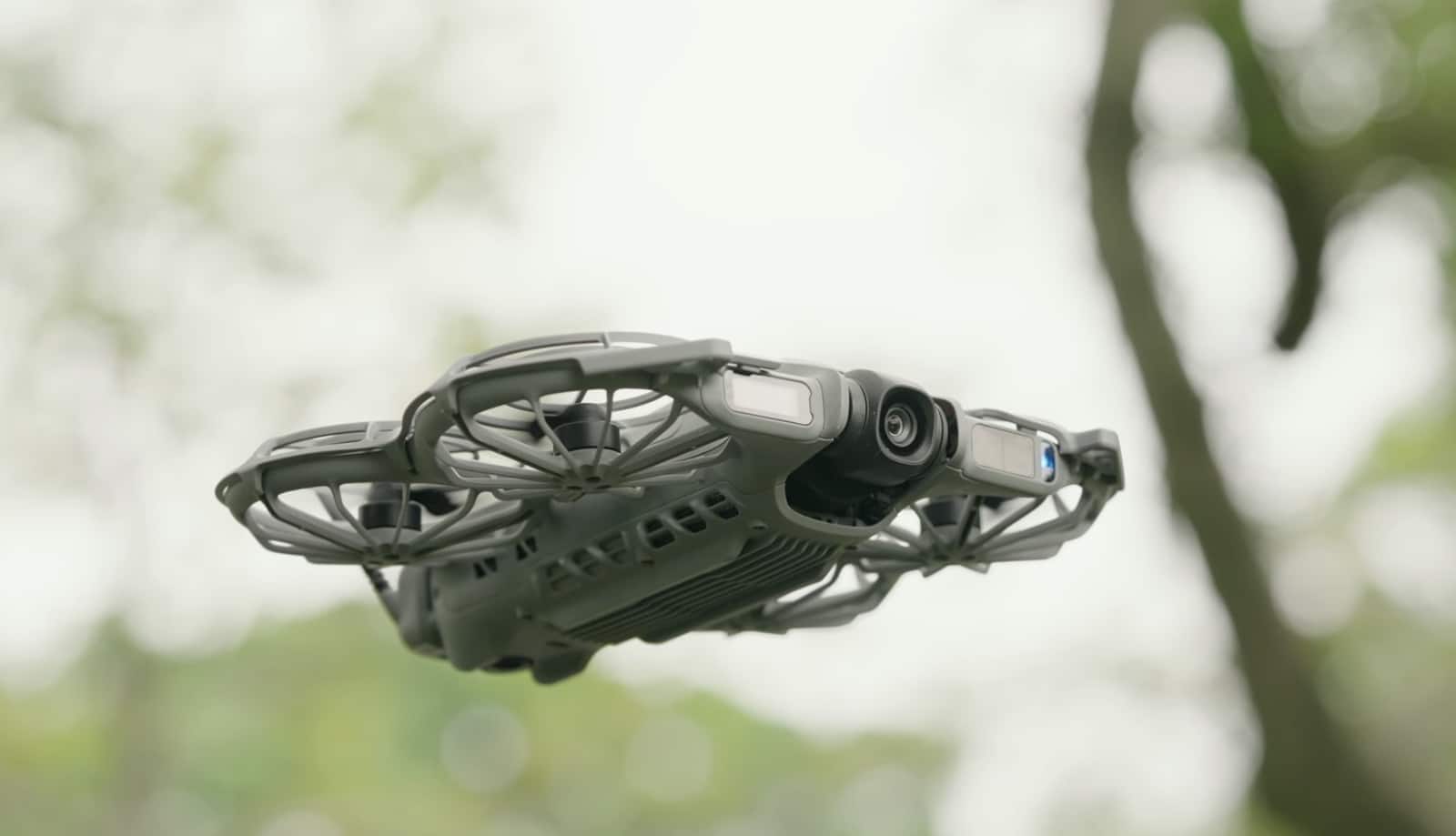
Controller Flight Unlocks Full DJI Fly App Features
With the RC-N3 controller, range extends to several kilometers. Huaiba demonstrates the full DJI Fly app interface becoming available, including the obstacle avoidance system display showing real-time proximity warnings.
“Flying with the remote really feels very much like the Mini 4,” he observes. When approaching obstacles, red warnings appear, “so when I push the stick forward it’s completely ineffective. You can see from the radar below that there are obstacles on the left.”
The intelligent tracking features work with controllers attached. Huaiba demonstrates tracking a person, with the eight-direction compass interface allowing precise following angle and distance control. “When our person starts walking, you can select the following angle you want. For example, I pull the compass to the left, and my NEO 2 will follow from the left side.”
Vehicle tracking works identically—selecting a car in frame enables following with adjustable angles using the compass interface. “In the screen you can also change the direction of following, even though this car isn’t moving right now.”
Huaiba emphasizes this is the same system available only on Mini 4 Pro and later models. “I didn’t expect that the NEO 2, after having omnidirectional obstacle avoidance, can follow people and cars, and activate the 8-direction compass shooting effect.”

FPV Flight with Motion Controller and Goggles
The final demonstration shows the Motion Fly More Combo in action. Huaiba puts on the goggles and uses the single-hand Motion Controller. “Let me show you how the NEO 2 flies.”
After double-clicking and long-pressing to take off, he explains: “Operation is very simple—you just need to press this trigger and look at the circle to fly where you point.” Using the side scroll wheel, he selects different flight modes including flip mode, executing rolls in various directions by pushing the thumb stick.
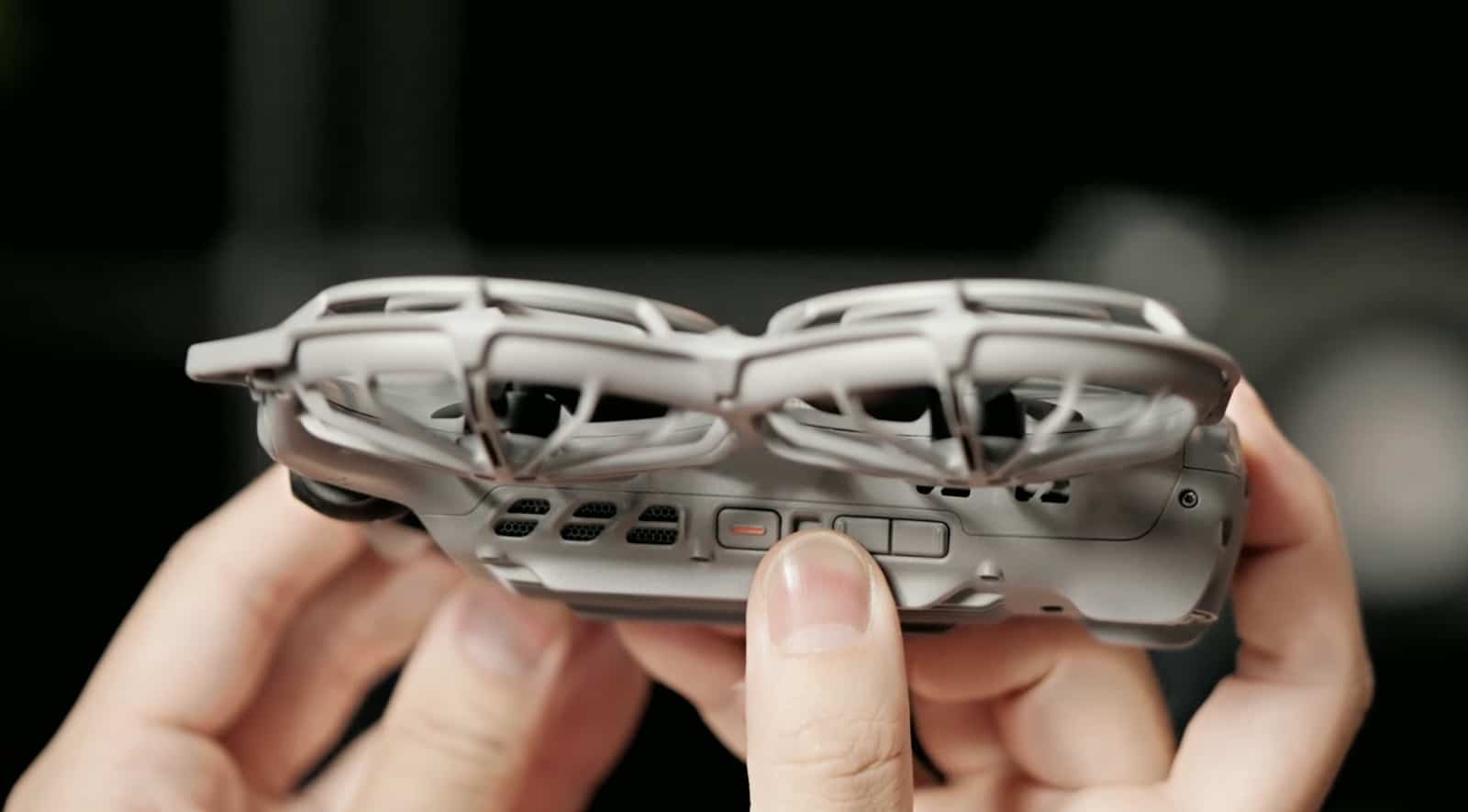
Drift mode produces “an effect really like drifting,” allowing the drone to “swing through” tight gaps between trees.
For FPV flying, Huaiba emphasizes that obstacle avoidance must be disabled. He demonstrates low-altitude flight through small forest gaps. “Because its body is really very thin and small, the holes it can drill through should be much smaller than everyone imagines.”
Switching to Sport mode increases speed to nearly 40 km/h. “This speed is much faster than the first generation.” Low-altitude flight produces the most dramatic speed sensation. “It still has ground protection function like the first generation, so flying is completely like a slightly smaller Avata.”
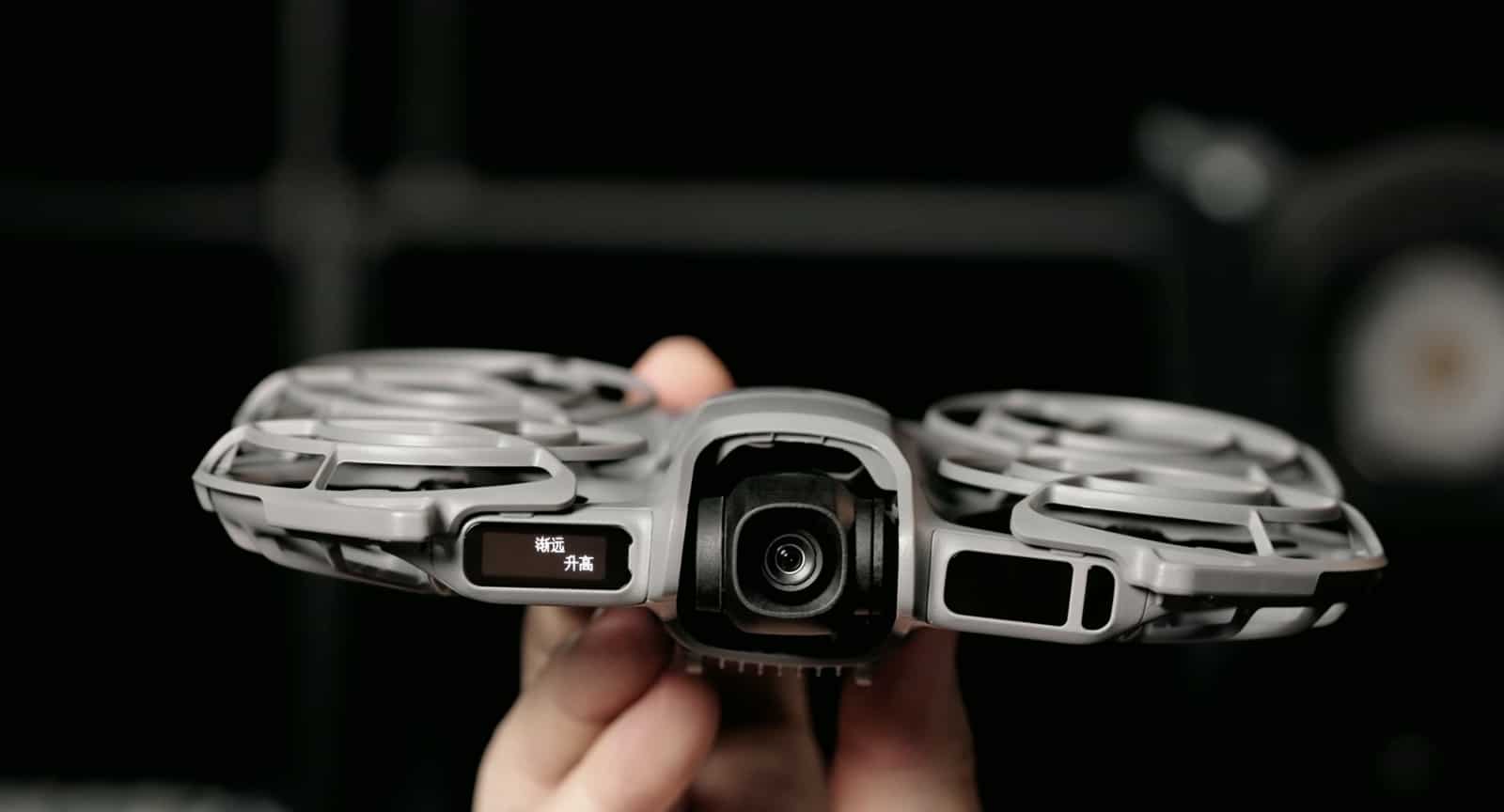
Four Purchase Options and Pricing Recommendations
Huaiba outlines four available versions:
- Standard Package (~NT$6,000+): Single battery, approximately 18 minutes flight time, USB power bank charging. Entry-level option for basic autonomous flight.
- Fly More Combo (no controller): Three batteries, charging hub, extending total flight time to nearly 50 minutes. Better charging convenience. “But pay special attention—although the NEO 2 can use RC-N2, RC-N3, and RC 2 controllers, these two versions don’t include the O4 transmission module.” Limited to approximately 500-meter Wi-Fi smartphone connection. Cannot connect game controllers or flight goggles.
- Fly More Combo with RC-N3: Includes RC-N3 controller and O4 transmission module for extended range flight. Recommended for users wanting full functionality.
- Motion Fly More Combo: Includes flight goggles and Motion Controller. “This combination is the easiest version to learn to fly,” Huaiba says. “Operation is very intuitive—you only need to move your wrist to fly with one hand. People from 8 to 80 years old can start experiencing the pleasure of flight within 3 minutes.”
For DJI Care insurance, Huaiba strongly recommends: “I really recommend going straight to two-year DJI Care insurance.” One-year costs NT$429, two-year costs NT$749. Each crash replacement costs only NT$829, while total loss replacement is NT$2,590.
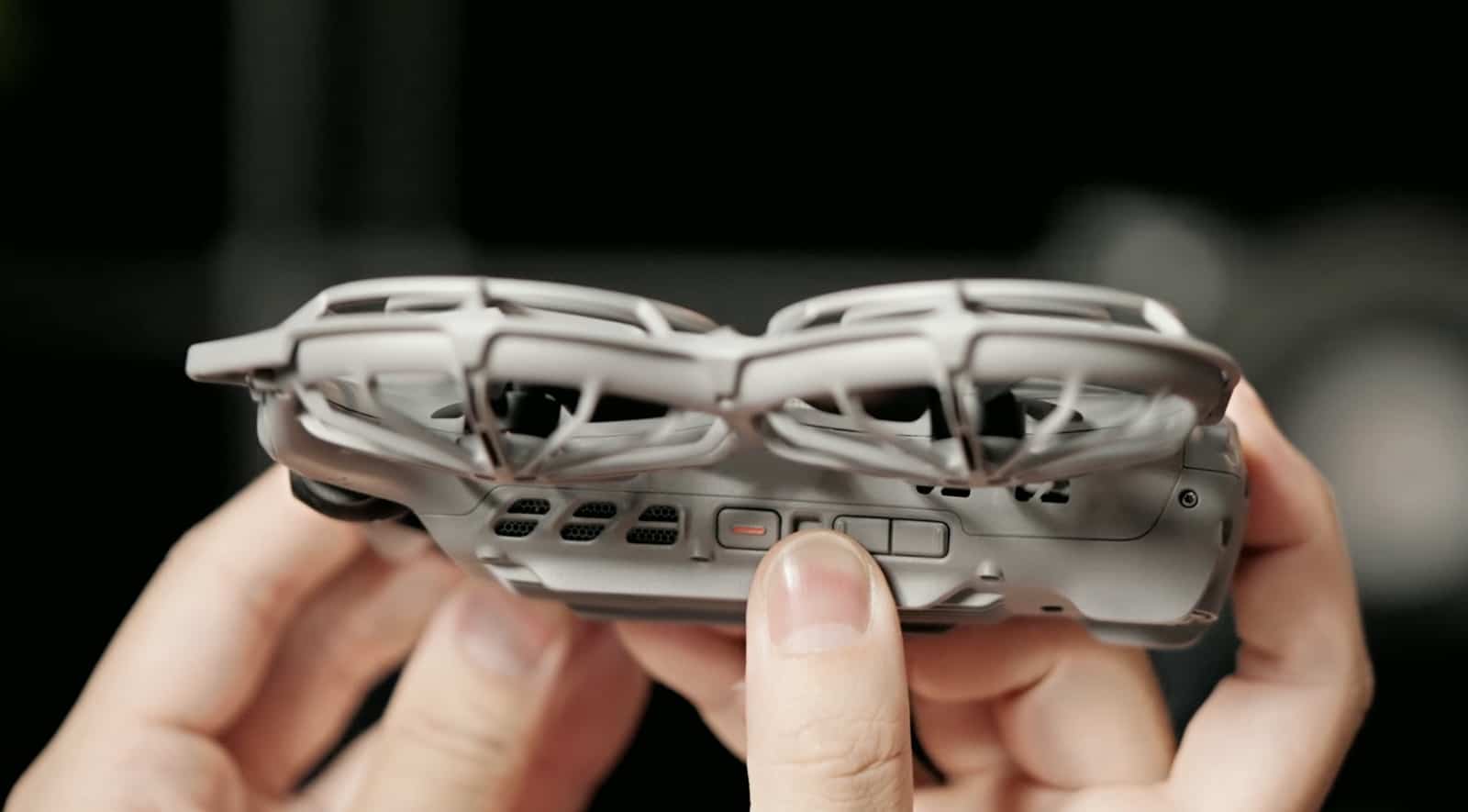
Comparison: NEO 2 vs. Flip vs. Mini 5 Pro
Huaiba provides direct purchasing guidance. “If you don’t know how to choose after reading this, which model is most suitable for you—simply put, DJI Mini 5 Pro is definitely the most comprehensive choice with the best image quality.” Its six fisheye cameras provide the most complete obstacle avoidance, largest body offers best wind resistance and power, and it supports lossless vertical shooting with rotation capability. “It’s just a pity that currently Mini 5 Pro doesn’t support palm takeoff function yet.”
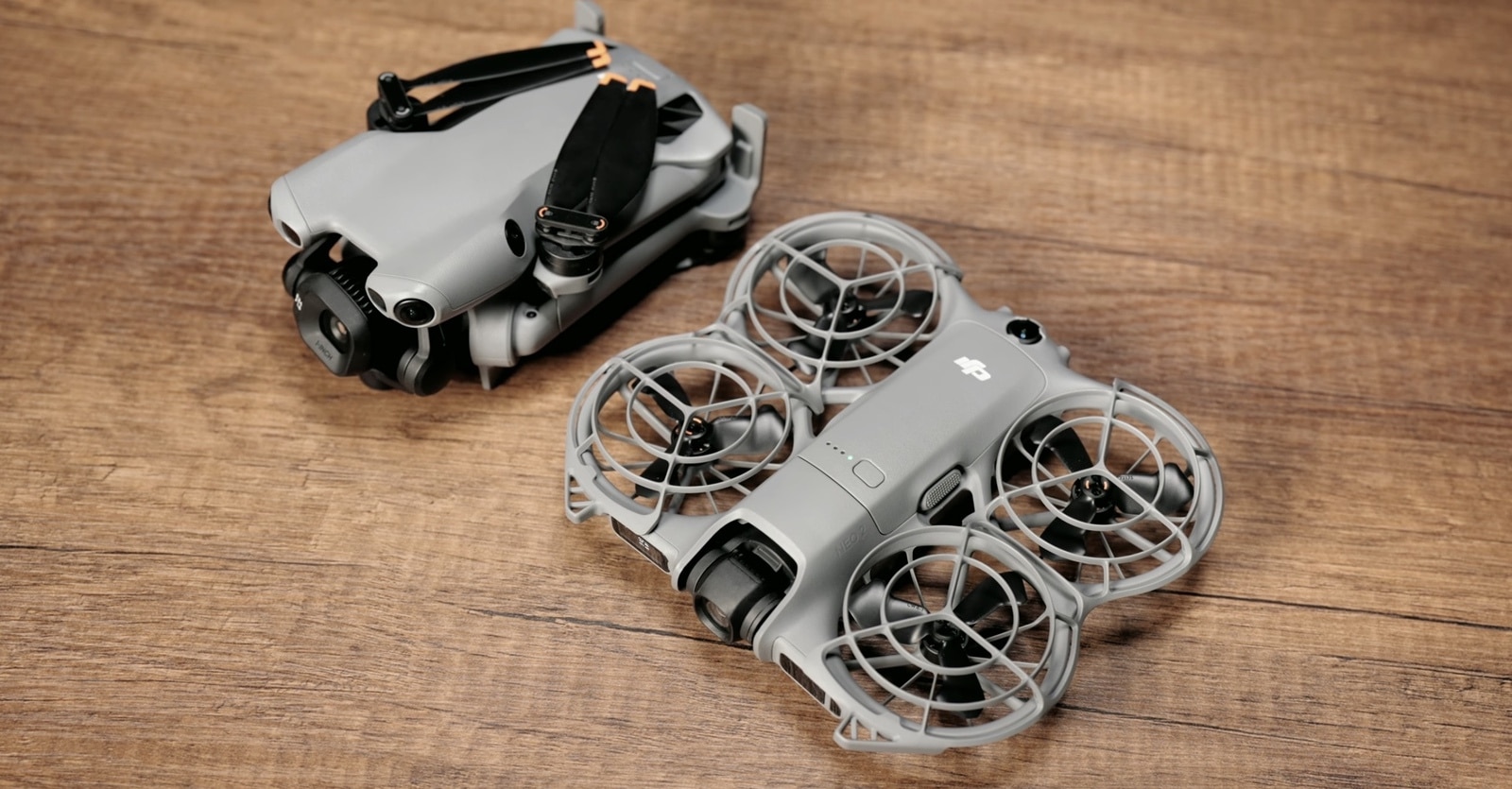
For the DJI Flip versus NEO 2: “Flip’s image quality still beats the NEO 2, and it has a mechanical three-axis gimbal. Its wheelbase is still relatively large, and it can take off at 3,000 meters altitude, so wind resistance is also superior to the NEO 2.” He recommends the Flip for high-mountain or coastal environments with harsh conditions. However, “Flip only has forward obstacle avoidance, so you need to be more careful when flying.”
His summary: “I think the NEO 2, in such a small body at such an affordable price, can still add omnidirectional obstacle avoidance, with greatly improved image quality, upgraded power and speed, and is currently DJI’s most diverse small aircraft.” All controllers and flight goggles work with existing products. “It can take off quickly from your palm for selfies, and can also use gesture control, or use a remote controller to increase flight distance. If you want more excitement, you can pair it with DJI goggles to experience the tricky high-speed flight of an FPV drone.”
Huaiba invites viewers still unsure about selection to “join our LINE@ official account and let me analyze and introduce it to you in detail.“

DroneXL’s Take
This hands-on review from Huaiba’s “怀爸疯科技” YouTube channel provides the most comprehensive real-world testing of the NEO 2 we’ve seen yet. His extensive forest tracking demonstrations, gesture control walkthroughs, and direct comparison footage with the original NEO and Flip deliver exactly the practical information pilots need to understand how the upgrades translate to actual performance.
The dual fisheye camera implementation clearly works as advertised—Huaiba’s deliberate tree-weaving tests show the obstacle avoidance functioning reliably in challenging conditions. This addresses the original NEO’s most glaring weakness that we highlighted in DC Rainmaker’s gauntlet testing, where the complete lack of collision avoidance severely limited safe operation.
His cycling tracking footage demonstrates the dramatic speed improvement. When we reviewed the original NEO long-term, tracking speed limitations made it frustrating for anything faster than jogging. The jump to 43 km/h following capability with dedicated riding mode transforms the platform’s practical utility.
The gesture control system deserves recognition as genuinely innovative UX design. Huaiba’s demonstrations show how eliminating smartphone dependency for basic adjustments removes significant friction from the autonomous shooting workflow. Being able to reposition the tracking angle or transfer subjects with simple hand movements is far more intuitive than the original’s limited controls.
His comparison with the DJI Flip highlights an important distinction. While the Flip attempted to bridge autonomous flight and quality imaging with its larger sensor and built-in propeller guards, it struggled with autonomous tracking performance and lacked comprehensive obstacle detection. The NEO 2’s lighter weight and full omnidirectional awareness actually make it more capable for autonomous operation in tight spaces.
For content creators prioritizing autonomous operation and tracking, Huaiba’s assessment rings true—the NEO 2 occupies a unique niche. The DJI Mini 5 Pro delivers superior image quality with its 1-inch sensor but requires controller operation for most scenarios and costs considerably more. The NEO 2 sacrifices ultimate image quality for instant palm-launch deployment and comprehensive autonomous capabilities.
The video conspicuously focuses entirely on Taiwan market availability and pricing with no mention of U.S. or European launch plans—a reflection of DJI’s ongoing regulatory challenges rather than product limitations. For pilots in markets where DJI products remain accessible, Huaiba’s testing demonstrates the NEO 2 delivers meaningful improvements that address real user complaints rather than superficial upgrades.
What do you think about Huaiba’s assessment of the dual fisheye obstacle avoidance system? Does the NEO 2’s autonomous capability make it more appealing than the Mini 5 Pro’s superior image quality for your use case? Share your thoughts in the comments below.
Discover more from DroneXL.co
Subscribe to get the latest posts sent to your email.
Check out our Classic Line of T-Shirts, Polos, Hoodies and more in our new store today!

MAKE YOUR VOICE HEARD
Proposed legislation threatens your ability to use drones for fun, work, and safety. The Drone Advocacy Alliance is fighting to ensure your voice is heard in these critical policy discussions.Join us and tell your elected officials to protect your right to fly.
Get your Part 107 Certificate
Pass the Part 107 test and take to the skies with the Pilot Institute. We have helped thousands of people become airplane and commercial drone pilots. Our courses are designed by industry experts to help you pass FAA tests and achieve your dreams.

Copyright © DroneXL.co 2025. All rights reserved. The content, images, and intellectual property on this website are protected by copyright law. Reproduction or distribution of any material without prior written permission from DroneXL.co is strictly prohibited. For permissions and inquiries, please contact us first. DroneXL.co is a proud partner of the Drone Advocacy Alliance. Be sure to check out DroneXL's sister site, EVXL.co, for all the latest news on electric vehicles.
FTC: DroneXL.co is an Amazon Associate and uses affiliate links that can generate income from qualifying purchases. We do not sell, share, rent out, or spam your email.





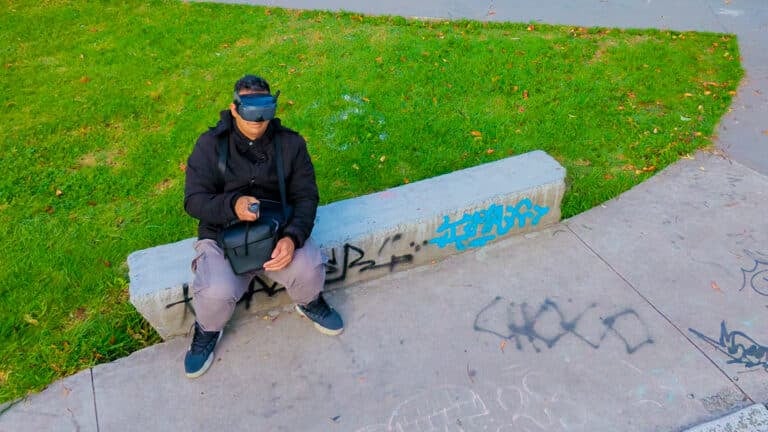
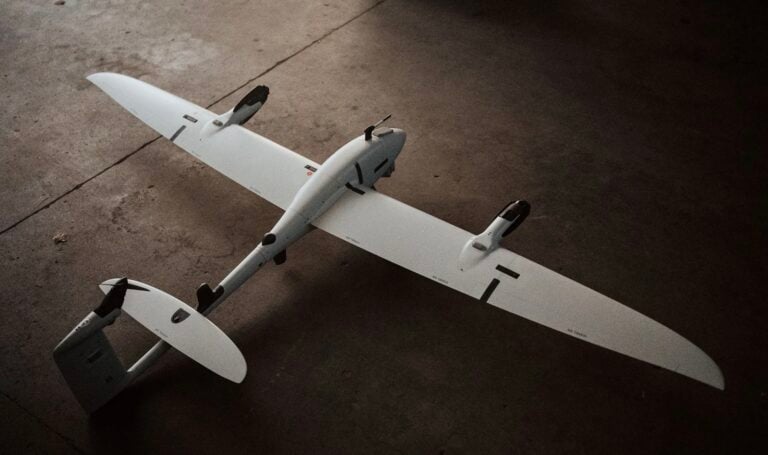
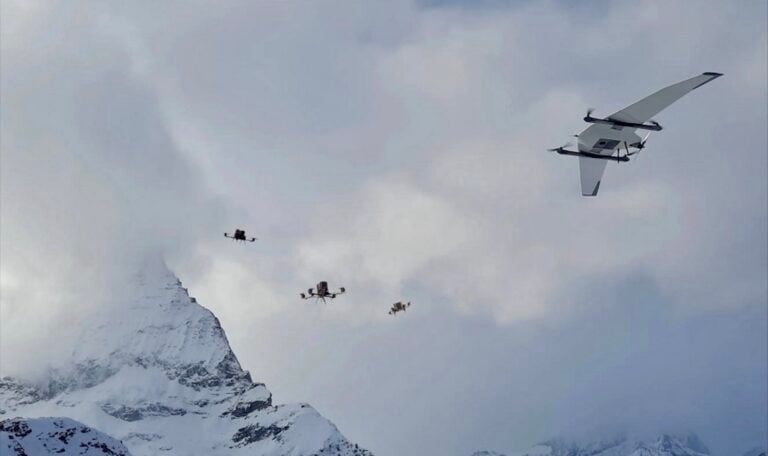

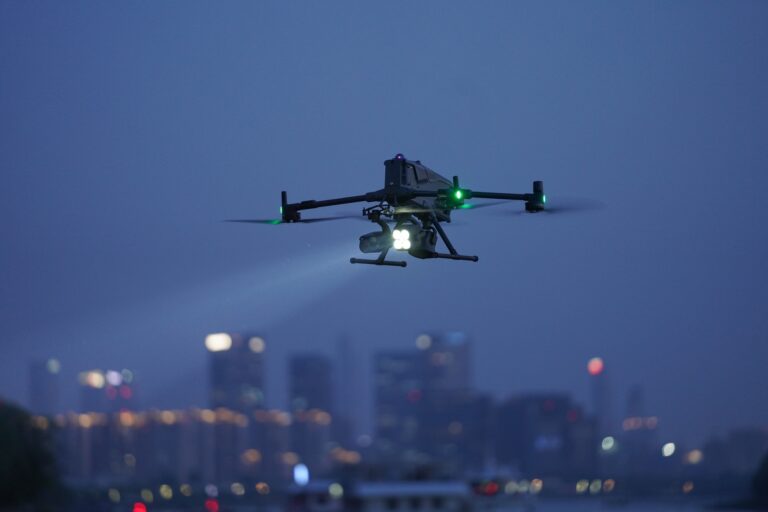





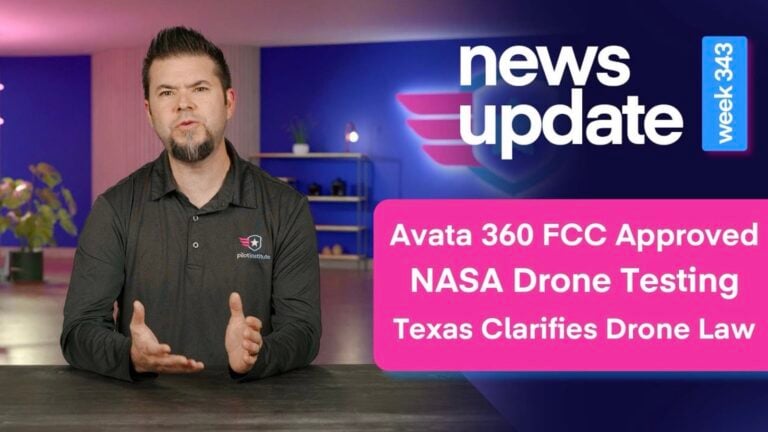
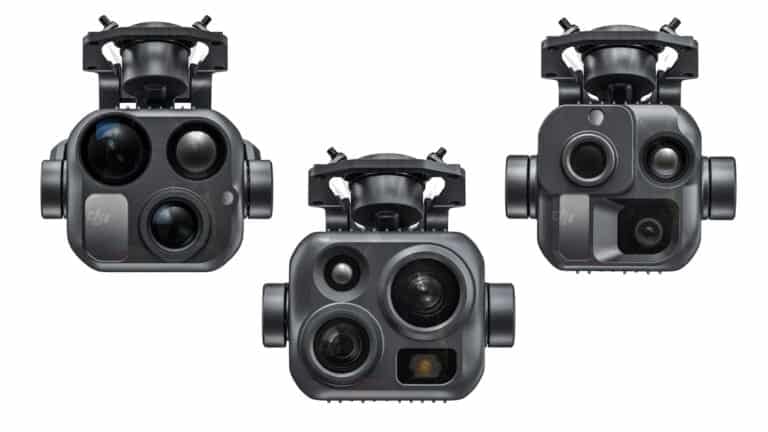
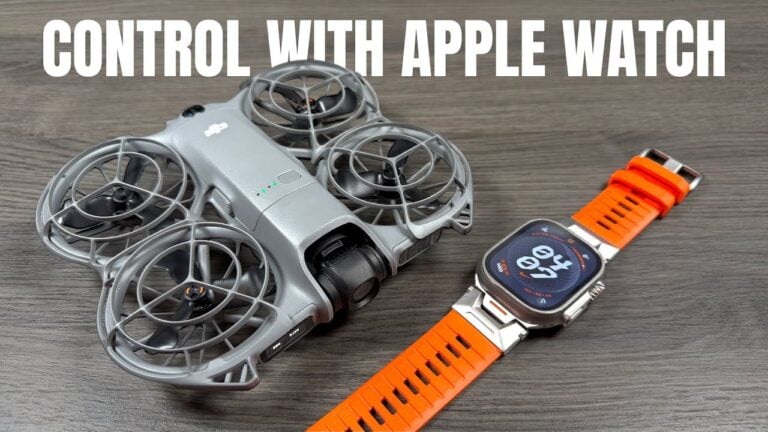


All I get from this is… you can only get a 500m range unless you buy their version with a Controller. Anyone already invested in the DJI ecosystem and has controllers… have to buy another one.
My understanding is that you can buy the O4 USB addon separately. The converted HKD price works out around US$30, but I’m seeing it “listed” around US$50.
I found the Neo 1 to be a serious disappointment, especially since I got the Motion Fly More Combo, leaving me with essentially a useless set of goggles, motion controller and FPV controller.
However, the Neo 2 seems to address ALL my concerns with the Neo 1 and I’m eagerly waiting for it to arrive in Canada.
One thing no one has mentioned (and it’s not in the Neo 2 user manual)… the Neo 1 couldn’t do photospheres, mainly because the camera has a single axis gimbal and the drone is just to unstable to hold itself in position for all the shots needed. But the Neo 2 has a two axis gimbal and higher wind rating – so I’m wondering if they added photospheres back in.
I mean, they’ve added most of the Mini 4 Pro features to the Neo 2 as it is.